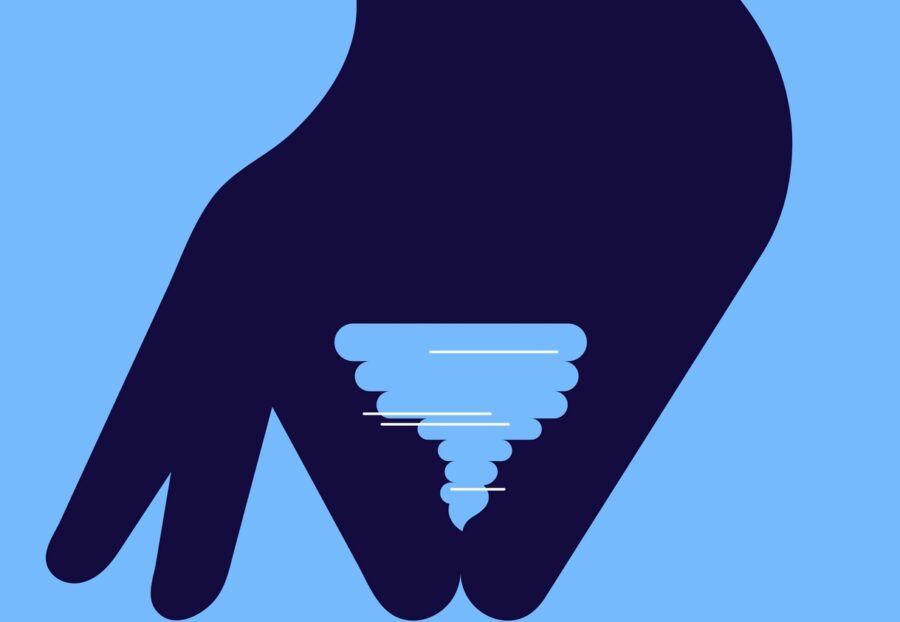Catastrophic Thinking: Tips on How to Manage It!
Catastrophic thinking – the tendency to think in extremes and overestimate risks – can be a normal reaction to stressful situations. It can be beneficial at times, but when it becomes an ongoing thought pattern, it can wreak havoc on your mental health. In this blog post, we will explore what catastrophic thinking is, its psychological effects, and how to manage it.
What is Catastrophic Thinking?
Catastrophic thinking is a form of negative thinking that can lead to feelings of anxiety and despair. It is characterized by thoughts that focus on worst-case scenarios and often lead to catastrophic predictions about the future.
Catastrophic thinkers tend to magnify the importance of problems and challenges and see them as insurmountable. They also have difficulty seeing the positive side of things, and may become fixated on their own negative thoughts and expectations.
This type of thinking can be extremely harmful to one’s mental health and well-being, as it can contribute to anxiety, depression, and other mental health disorders. If you find yourself regularly engaging in catastrophic thinking, it’s important to seek help from a mental health professional who can help you develop more positive ways of thinking.

The Different Types
There are many different types of catastrophic thinking, and each type can have a different impact on your life. Here are some of the most common types of catastrophic thinking:
1. All-or-Nothing Thinking: This type of thinking leads you to believe that things are either all good or all bad. If something goes wrong, you see it as a complete disaster and feel like a complete failure. This type of thinking can lead to depression and anxiety.
2. Black-and-White Thinking: This type of thinking leads you to see the world in terms of absolutes, such as good vs. evil or right vs. wrong. You may have trouble seeing the shades of gray in life and tend to overreact to things that don’t go your way. This type of thinking can lead to rigidity and inflexibility.
3. Fortune Telling: This type of thinking leads you to believe that you know what will happen in the future, even though you don’t have any evidence to support your predictions. You may worry excessively about things that might never happen. This type of thinking can lead to anxiety and fearfulness.
4. Mind Reading: This type of thinking leads you to believe that you know what other people are thinking, even though you don’t have any evidence to support your beliefs. You may make assumptions about what others think of you and then act accordingly, which can lead to social anxiety or relationship problems.
Why Do People Engage in Catastrophic Thinking?
There are many reasons why people engage in catastrophic thinking. One reason is that they have a need for attention and validation. When they catastrophize, they are often seeking attention from others who will validate their feelings and thoughts.
Another reason people engage in catastrophic thinking is that it can be a way to avoid taking responsibility for their own actions and decisions. By catastrophizing, they can blame others for the negative outcomes that occur in their lives instead of taking responsibility themselves.
Lastly, people may also engage in catastrophic thinking because it can be a way to cope with anxiety and fear. When faced with a situation that is stressful or scary, catastrophizing can help to make the situation feel more manageable by allowing them to imagine the worst-case scenario. This can help to lessen the impact of the actual event if it does occur.

The Effects
Catastrophic thinking is when we allow our thoughts to run away with us, and we start to believe that the worst possible outcome is inevitable. This kind of thinking can be very damaging and lead to a feeling of hopelessness. It can also make us feel like we are not in control of our lives.
Catastrophic thinking can have a number of negative effects on our mental and physical health. It can lead to anxiety and depression, and it can also make us more likely to suffer from physical health problems such as heart disease.
If you find yourself catastrophizing, it is important to try and take back control of your thoughts. Challenge your negative beliefs, and focus on the positive things in your life. Seek professional help if you are struggling to cope.
How to Stop Engaging in Catastrophic Thinking
It’s easy to fall into the trap of catastrophic thinking, especially when you’re feeling anxious or stressed. But there are some things you can do to stop yourself from going down that rabbit hole.
First, try to take a step back and examine your thoughts. Are they really as bad as you’re making them out to be? Often, when we’re catastrophizing, we’re blowing things way out of proportion. If you can catch yourself doing this, it’ll be easier to correct your thinking.
Second, try to focus on the present moment. Catastrophic thinking is usually about something that hasn’t happened yet (or may never happen) and is therefore outside of your control. Focusing on the here and now will help you feel more in control and less anxious.
Third, remind yourself that just because you’re thinking something doesn’t make it true. We all have negative thoughts from time to time, but that doesn’t mean they’re accurate. Just because you’re worried about something doesn’t mean it’s going to happen.
If you can find ways to stop engaging in catastrophic thinking, you’ll likely feel less anxious and stressed overall. Give it a try next time you start feeling those negative thoughts creeping in!

Conclusion
Catastrophic thinking can be a difficult habit to break, but it is worth the effort. Remember that not every situation is life or death, and we all go through difficult times in our lives; with the right perspective and support system, you can learn how to manage your catastrophic thoughts so they don’t take over your life.
Also read: Working Mom Burnout: What to Do?
